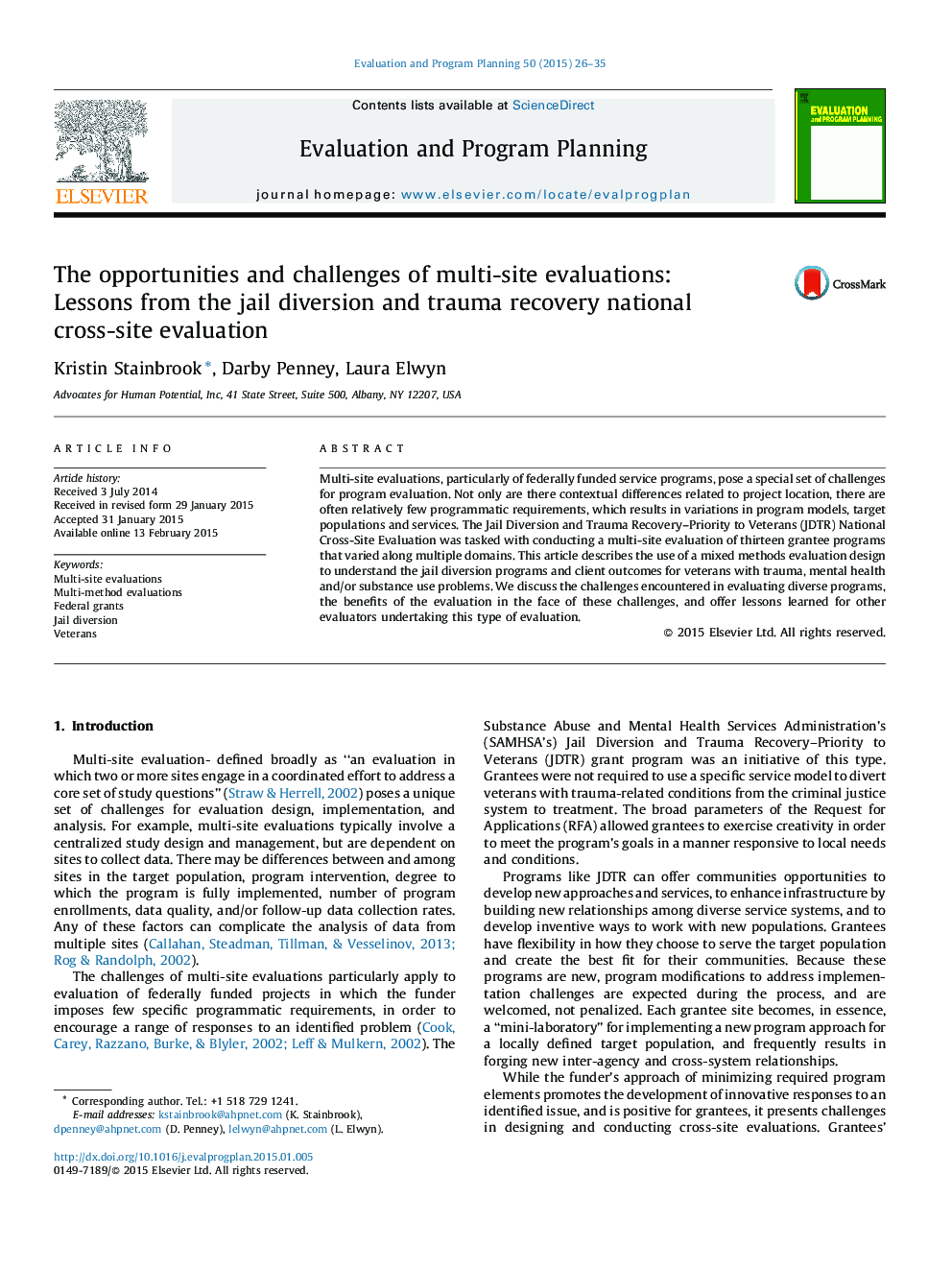| Article ID | Journal | Published Year | Pages | File Type |
|---|---|---|---|---|
| 319405 | Evaluation and Program Planning | 2015 | 10 Pages |
•Mixed-method evaluation designs provide a consistent framework to help address the complexities of multi-site evaluations where programs vary on a wide range of dimensions.•Process evaluation data from site visits was used to develop indicators of key program level program components to facilitate cross-site analysis.•Despite differences in program models across sites, there are strong similarities in client characteristics, experiences, and outcomes.•Indicators developed through the process evaluation can be used to enhance the analysis and interpretation of client outcome data.
Multi-site evaluations, particularly of federally funded service programs, pose a special set of challenges for program evaluation. Not only are there contextual differences related to project location, there are often relatively few programmatic requirements, which results in variations in program models, target populations and services. The Jail Diversion and Trauma Recovery–Priority to Veterans (JDTR) National Cross-Site Evaluation was tasked with conducting a multi-site evaluation of thirteen grantee programs that varied along multiple domains. This article describes the use of a mixed methods evaluation design to understand the jail diversion programs and client outcomes for veterans with trauma, mental health and/or substance use problems. We discuss the challenges encountered in evaluating diverse programs, the benefits of the evaluation in the face of these challenges, and offer lessons learned for other evaluators undertaking this type of evaluation.
